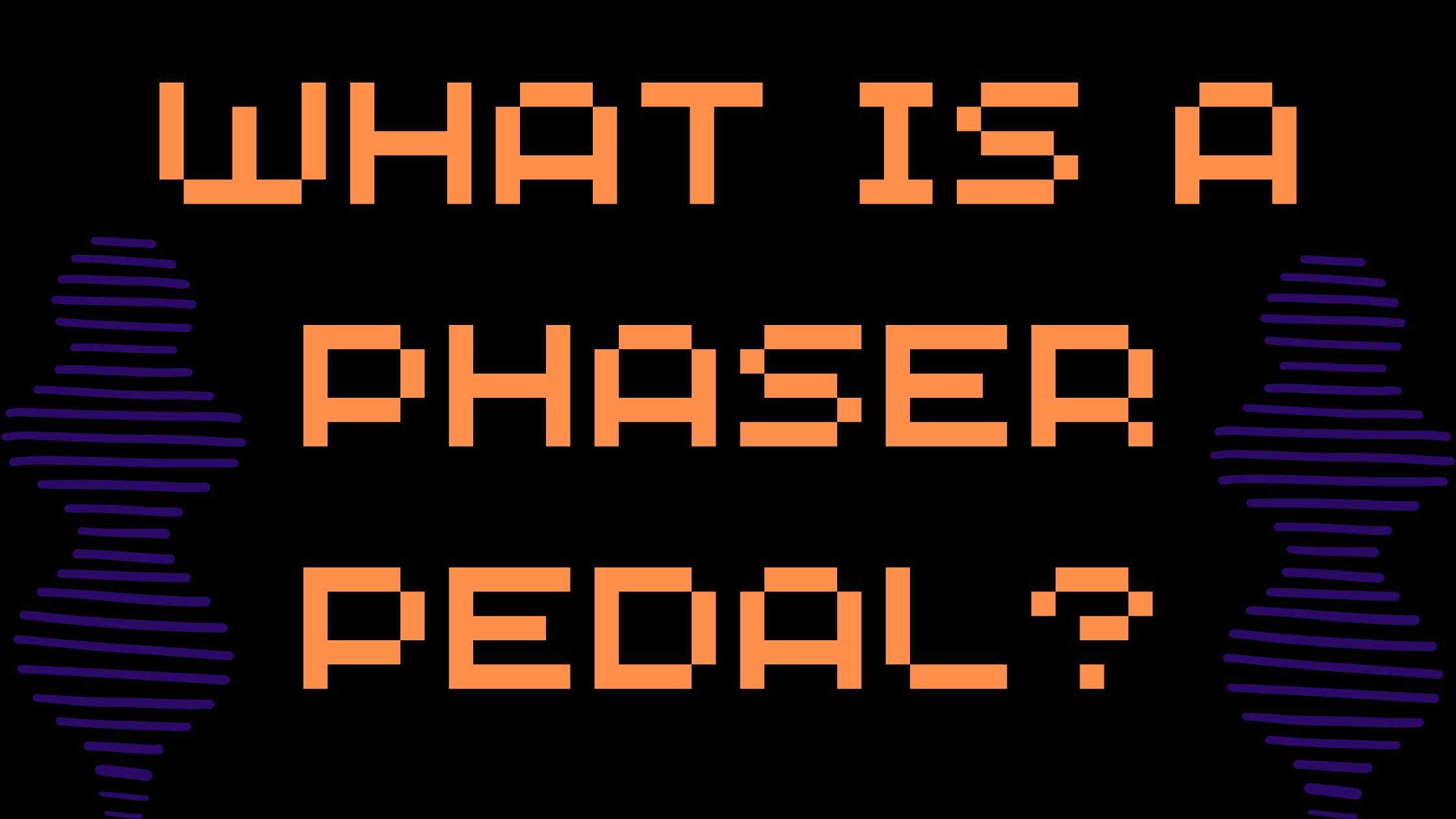A phaser pedal is an effect similar to a rotary speaker which was developed to simulate the sound of organ.Sound designers over the years have adapted the phaser effect to create many different timbres. 60s psychedelia is notable for employing this effect to add swirls and other textures, as can be seen in music by Janis Joplin or even later with Van Halen. Phasers today remain a commonly-used instrument for sound specialists.
Essentially, a phaser duplicates an input signal and shifts the phases. When these signals are combined, they create that distinctive “phased” sound.
Phases are a signal that’s shifted forward or backward in time. A digital phaser pedal has many options that create various phased sounds. The more stages the pedal has, the broader range of sounds it can produce. A phaser that uses analog circuits usually has fewer phase settings, but they’re usually preferred because they use fewer components, which makes them lighter and less expensive. A classic 70s phaser might have four stages.
The phaser sound is instantly recognisable. It has a spacey, bright vibe that bubbles on top of your tone. Pioneered in the ’70s by rock bands like Van Halen (with Van Halen’s Eruption) and Pink Floyd, or Isley Brothers’ Who’s That Lady, many alternative rock bands in the ’90s also innovated with phaser pedals, which produced trippy sounds when activated.
HOW DOES A PHASER WORK
A phaser pedal processes your guitar’s signal to produce a creative effect. It splits it into two, and one of the signals is left dry while the other has its waveform adjusted and manipulated. This is achieved by blending the input signal with an ‘LFO’ (low-frequency oscillator). When these waves interact with one another, some of the frequencies will cancel others out, producing a sound that sounds distinctly wavy and distorted. This property is what brings phasers their iconic sound.
SETTINGS ON A PHASER PEDAL
If you’re a beginner with a phaser pedal, the dials can be of some uncertainty.
There can be:
- Speed/Rate
- Depth
- Feedback
- Mix
- Resolution
- Stage selection
- Mode selection
When adjusting these knobs, keep in mind that there is no set rule. Each person’s experience with a phaser pedal will be different, depending on their needs & desires. Most phaser pedals will have a speed knob on them that you can use to control how quickly the effects move.
WHAT TO WATCH WHEN BUYING A NEW PHASER PEDAL
Some guitarists argue that the unique, rich sound of analog is preferable to the artificial digital sound. Whether you have an analog or digital phaser, the most basic control is phase speed, which controls the speed of the rise and fall of the wave. The depth of the sound (often referred to as level) relates to the intensity of the waves, while resonance (also called resolution) is another common EQ control that emphasizes various tones across the sweep.
A classic phased effect can be created with the help of a slow, ringing chord. It’s understandable that the pitch of the waves will typically depend on the beat, which is why you’ll often find phasers used to play chords set at slower speeds.
It’s preferable to match your phaser’s speed with the tempo of the song, which can be achieved through tap tempo or MIDI. It also helps in coordinated speeds. A phaser is not just for chords, but the staccato effect from Jimi Hendrix’s Machine Gun is a classic example. Phasing is also used to boost individual partials.
WHERE DOES IT GO IN MY PEDALBOARD SIGNAL CHAIN?
A phaser pedal should be routed through an amplifier’s ‘effects loop’ – hidden before the power amp. This provides a balanced and natural sound. Phaser pedals can be connected to a guitar amp’s main input, but this can produce an overly-processed tone with an unwelcome boost in volume.Phaser pedals should be placed before any delay or reverb stompboxes in your signal chain. Otherwise, you risk the signals of your delays and reverbs being impacted by the phaser.
HOW TO USE IT
Phaser pedals allow you to unleash all sorts of creativity – they’re really just the perfect tool to experiment with. Though there are some people who argue that phasers are only appropriate in certain situations, we can’t agree any more. With a phaser attached, your tone will be as diverse as you want it to be. Plus, you’ll never want for another pedal
I disagree with this statement, as I think that the phaser effect is a powerful tool for creativity. In modern music, where’s there not a place for it?
For melodic verse fills
Basically, you can use a phaser pedal to make the sound of your guitar appear full and deep. For example, if you’re trying to only play 3 or 4 notes in a chorus/bridge, you can use the phaser pedal to give your chorus/bridge more detail. This will produce a sort of depth to the music you’re playing.
For chord swells
This tool has been a staple of newbies since day one. It is an often-overlooked technique that, when done right, can produce a sound that we refer to as sustain or “chord swell.” When played in slower songs, chord swells usually sound better.
For adding some spice to your solos
A phaser pedal creates a more subtle tone, but can be just as effective. You put the pedal on before your amp’s clean tone to create a more lush and less distorted sound.


